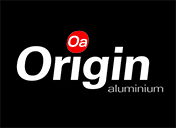Energy Efficiency – How Does Your Aluminium Measure Up
The expression “energy efficiency” has become so frequently used that we can easily forget the why behind the term. From homeowners to builders and architects, we all are bound to the stringent performance criteria that an energy efficient building must adhere to – and rightly so.
Why the Drive for Energy Efficiency?
The global determination to do more with less is not simply the latest political bandwagon that we need to jump on. Rather, it is an essential requirement to ensure the quality of life for future generations. We simply cannot go on blindly chopping and mining our way through the available resources until they are depleted.
However, while a single drop of water saved may make no difference to the whole, if everyone is pulling in the same direction then our efforts – no matter how small – will add up to something significant. The less energy we use, the fewer natural resources we need to draw on; choosing the right materials at the start of a building project means less strain on our planet.
There is more, however.
Energy Efficiency in a building
An energy efficient building saves money.
Every wise decision – energy efficient appliances and lighting, cold water washing, solar panels, energy efficient windows and doors, rainwater harvesting, grey-water recycling and insulation – puts a penny in the jar of an efficient home or building.
Making energy efficient choices helps the economy.
No matter where you live, the cost savings you see on a small scale in your home or business are exponentially bigger when applied nationally.
While we have only touched on the broad subject of energy efficiency, it’s fair to say that planning a green building, and sourcing the best building products needs to be given high priority.
Applauding Great Energy Efficient Products
“The AAAMSA Group established the South African Fenestration and Insulation Energy Rating Association (SAFIERA) to support its drive to promote energy efficiency in the building industry. SAFIERA’s primary goal is to provide a fair, accurate, and reliable energy performance rating system.”
Establishing the energy performance rating for fenestration and thermal insulated building envelope systems, computer simulations, as well as physical system testing, is used. By these means, SAFIERA can determine factors such as:
- Thermal performance ratings
- Solar heat gain coefficient
- Air leakage
- Visible transmittance
- Condensation resistance
- Water resistance under pressure
- Deflection
“SAFIERA provides certified rating and labelling that enable consumers to compare the energy and performance features of windows, doors, skylights and thermal insulation in roofs, walls and floors so they can make the best purchasing decisions.” (Source)
The requirements that need to be met in order to achieve SAFIERA certification are understandably tough and for good reason.
“During 2013, Origin Aluminium achieved the much sought after SAFIERA Energy Rating Certifications for the Origin Patio Door and the Origin 340 Casement Window. This certification provides homeowners, architects & builders all the necessary energy and mechanical performance information required when building a new home and planning for optimal energy efficiency. Both certificates together with all the ratings & results are available for download on our website www.origingroup.co.za” (Source)
The patio door and casement window mentioned above are just two of the products that have undergone successful testing; others include the vertical and horizontal slider, the side hung window, the curtain wall and the shopfront.
Understanding the Whole-Building Approach
While we at Origin Aluminium design, manufacture and install glass and aluminium systems, we are very aware that a “green” ‘building needs to be treated as a single system, with each element playing its part. If you use lightweight and sturdy aluminium framed doors and windows but neglect to make use of proper insulation in the roof, for example, you will be spinning your wheels so to speak.
Further energy efficiency aspects that can be considered when building a residential or commercial building can include:
- Site and room orientation
- The thermal mass of building products
- Lighting
- Glazing
- Water-heating choices
- Low-thermal mass of roofing
- Continuous insulation
- Moisture and air barriers
- Ventilation and mechanical heating/cooling choices
- Electrical design and choice of appliances
It’s a lot to think about but makes for a rewarding result.
After almost a decade and a half of excellent design decisions, top quality manufacturing and thousands of very satisfied customers, Origin Aluminium is your best choice for architectural glass and aluminium products.
Talk to our nearest team about our beautifully designed and practical energy efficient products.


